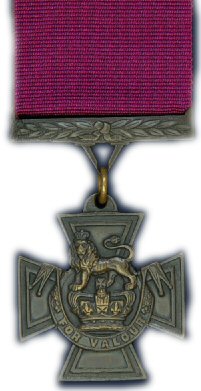The Victoria Cross (VC)
The V.C. was first introduced on the 29th January 1856 by Queen Victoria to honour acts of valour during the Crimean War. The Victoria Cross (V.C.) is the highest military decoration awarded for valour "in the face of the enemy" to members of the armed forces of the United Kingdom and various Commonwealth countries, and previous British Empire territories. It takes precedence over all other orders, decorations and medals. It may be awarded to a person of any rank in any service and to civilians under military command. In the United Kingdom, it is usually presented to the recipient or to their next of kin by the British monarch at an investiture held at Buckingham Palace. Ever since its institution the Cross has been supplied by the well-known
London jewellers, Messrs. Hancocks and Co., now of Burlington Gardens
London W1. The Cross and suspender are first cast in gunmetal and then
chased and finished by hand; from 1914 to 1950 a die-cast suspender was
used. The metal is taken from guns captured from the Russians in the
Crimean War although during and after the First World War it is fairly
certain that metal from captured Chinese guns was also used for a short period. The components of the decoration are then treated chemically to obtain the uniform dark brown finish, which is darker on some issues than on others. The Cross is 1.375 inches wide and, together with the suspender bar and link, weighs about 0.87 ounces troy, although chasing and finishing may cause slight variation in these figures. The design of the Cross is attributed to H.H. Armstead who at the time of its inception was working for Hancocks, the design then being approved by the Queen Victoria.
Men of the Worcestershire regiment who have been awarded the V.C.Click on a Photograph or name below for further details of the individuals Victoria Cross awards |
|
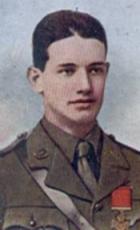 |
Lieutenant Eugene Paul Bennett V.C.Lieutenant Bennett was 24 year old when he won his VC during the Battle of The Transloy Ridges (Somme). During the attack he led 'C' Company of the 2nd Battalion Worcestershire Regiment. Heavy shelling and machine gun fire caused Lieutenant Bennett to fall wounded in sunken trench. He saw 'D' Company in trouble with their commanding officer and N.C.O. killed. Despite his wound Lieutenant Bennett cutting steps in the side of the trench with a spade he scrambled out, rushing to the front of the Battalion, spade in hand, he waved them on. For his bravery and fine leadership, which resulted in saving the Battalion and capturing the enemy line, Lieutenant Bennett was awarded the V.C. He was later promoted to Captain. |
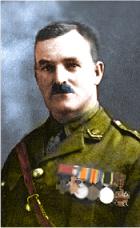 |
2nd Lieutenant John James Crowe V.C.Lieutenant Crowe was 41 year old when he won his VC during the stand against the German onslaught on the Lys Valley in 1918 at Neuve Eglise. At the time he was acting Captain and Adjutant with Battalion Headquarters of the 2nd Battalion worcestershire Regiment and they were hoding a position in the Town Hall at Neuve Eglise. Surrounded by the enemy he decided, with volunteers, to make a sortie and to clear a path for retirement. With a quick rush they occupied a cow shed close by; then, with two men, Lieutenant Crowe crawled round and rushed a machine gun post, capturing both guns. Lieutenant Crowe's party then provided cover allowing retirement of the rest of the men. |
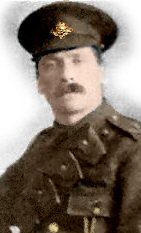 |
Private Frederick George Dancox V.C.Private Dancox was 38 year old when he won his VC during the Battle of Poelcappelle (Ypers, Belgium). He was with 4th Battalion Worcestershire Regiment . During the advance a enemy block-house opened fire mowing down Officers and men and hampered the operations. Private Dancox, who had been one of a party of moppers-up, worked his way under heavy shell fire from shell-hole to shell-hole to the rear of a block-house, and, with a bomb in his hand, surprised the German machine gunners inside. They surrendered, and Dancox, carrying the gun, which he fired throughout the day, marched his prisoners back. Sadly, Private Dancox was killed shortly afterwards in action, Near Masnieres, France on 30th November 1917. |
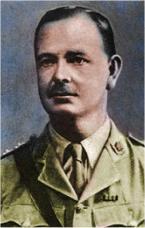 |
Lieut.-Colonel George William St. George Grogan V.C.During the Battle of the Aisne (1918), the Germans made a surprise attack on a sector held by young drafts, and broke through. Colonel Grogan was commanding a mixed force (23rd infantry Brigade) of about eight hundred men of various regiments. As the enemy continued their pressure on the British, Colonel Grogan rode along the front of the line, cheering on his troops. "You can stop them if you want to," he cried; "the Boches are no bloody good." Shells, bombs and bullets were all round him; his horse was killed under him, but he found another mount and continued to inspire his men. Colonel Grogan's Victoria Cross was the reward for that inspired leadership under which tired, hungry and disheartened men became heroes. |
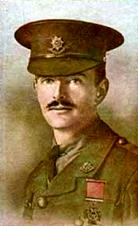 |
2nd Lieutenant Herbert James V.C.Lieutenant James was 26 year old when he won his VC during the fighting with the Turks at Krithia in Gallipoli in 1915. He was the first of the Regiment so to be honoured with the Victoria Cross. He was involved in action while attached to the Royal Scots as liaison officer before returning to the 4th Battalion Worcestershire Regiment. During fierce fighting with the Turks, Lieutenant James kept the Turks at bay by bombing from each bend of a winding trench. Halfway back, where the trench was blocked by bodies, he found a wounded bomber, Private Parry, and here he piled sandbags on the top of the bodies, forming a barricade. Luckily, he found a sack of bombs, and, alternately firing from behind the barricade and rising to bomb the Turks behind the bend, he kept the enemy back until help arrived. |
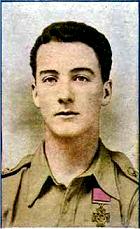 |
2nd Lieutenant Edgar Kinghorn Myles V.C.Lieutenant Myles of the 8th Bn The Welsh Regiment was attached to the 9th Battalion The Worcestershire Regiment and saw service with them at Gallipoli, in Egypt and Mesopotamia (in the Tigris Campaign)—He fought with the rearguard at the evacuation at Suvla Bay and Helles in 1915-16. He was awarded his Victoria Cross (at the age of 21) at Sanna-i-Yat, Mesopotamia, whilst the 9th Battalion were trying to relieve Kut, under the command of Lieut.-General Sir Stanley Maude, on 9th April 1916. His citation read: |
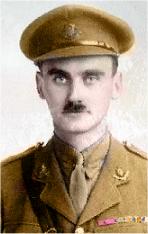 |
Major (Acting Lieut. Colonel) Frank Crowther Roberts V.C.On the 23rd March 1918, the 1st Battalion Worcestershire Regiment, commanded by Lieutenant Colonel (Captain/temp. Major) Roberts, was spread out along the River Somme in a series of posts; all four Companies were in the line, with practically no reserve. That night, while inspecting his posts, Colonel Roberts found that the Germans had crossed the river and captured the village of Pargny (Somme). He decided on instant counter attack. Two flanking parties of ten men each worked along the outskirts of the village, and he led the rest up the main street with bayonets fixed. They were soon observed, and they charged at full tilt up the street, firing, stabbing and cheering as the enemy poured out of the houses. There was a fierce fight at the churchyard, but the rest of the Germans either surrendered or retreated to the bridge. |
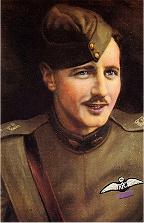 |
Lieutenant William Leefe Robinson V.C.Lieutenant Robinson was 21 year old when he won his VC. He was attached to 39 Squadron, Royal Flying Corps. On the night of 2nd/3rd September 1916 over Cuffley, Hertfordshire, Lieutenant Robinson sighted a German airship - one of 16 which had left bases in Germany on a mass raid over England. The Lieutenant made an attack at a height of 11,500ft approaching from below and, closing to within 500ft., raked the aircraft (a wooden-framed Schutte Lanz) with gunfire. As he was preparing for another attack, the airship burst into flames and crashed in a field. On one of his other missions he was shot down and became a POW in Germany. He died on the 31st December 1918 at Stanmore, Harrow from the effects of the influenza pandemic at that time. |
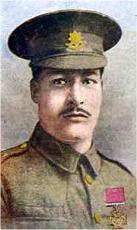 |
Private Thomas George Turrall V.C.Private Turrall was 30 year old when he won his VC whilst serving with the 10th Battalion Worcestershire Regiment at the storming of La Boisselle, France. During this night attack the Battalion suffered heavy losses and all the senior officers were killed or wounded. A small party led by Lieutenant Jennings, pushed forward through the village, bombing, taking prisoners and picking up stragglers. Private Turrall, one of the Battalion bombers, joined the party; a hidden machine gun opened fire, and Private Turrall flung himself flat, escaping injury. All the rest of the party was killed, except Lieutenant Jennings, whose leg was shattered. Turrall dragged him to a shell hole, bandaging his leg with one of his puttees. At night he managed to make his way back to the trenches, carrying the wounded officer. The officer died within two hours, but not before giving an account. |

